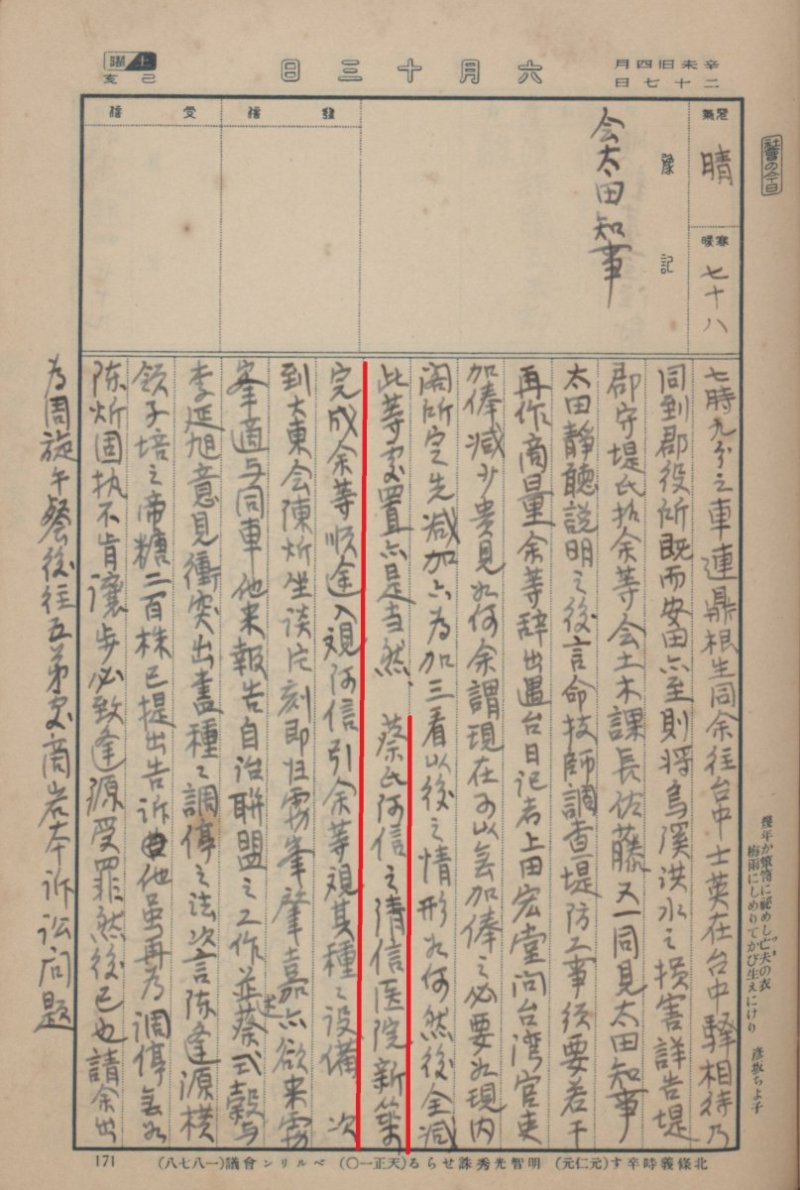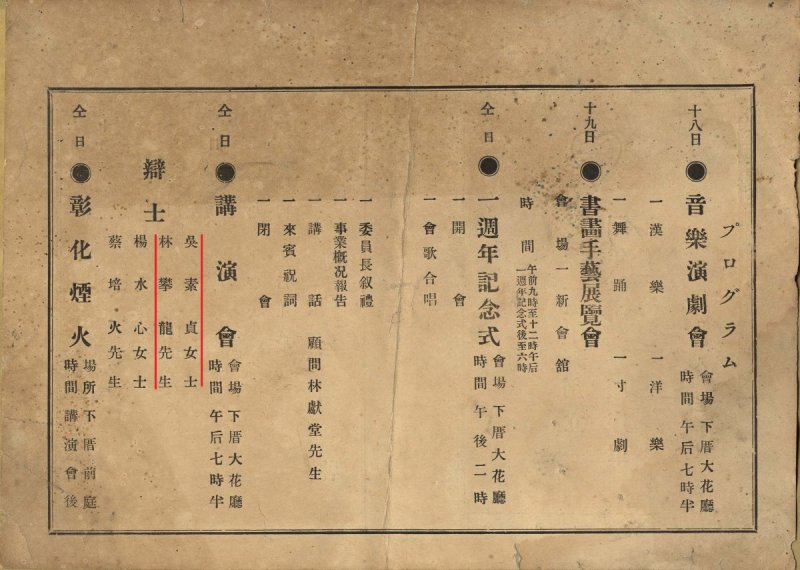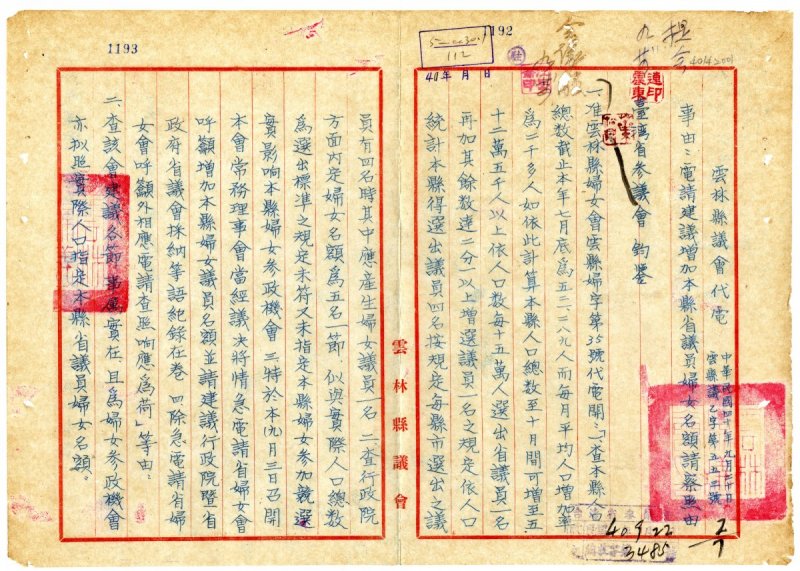|
After being liberated from the footbinding custom of the past, Taiwanese women acquired more knowledge and skills through modern education. Their activities and social roles also began to diversify. More and more women started to embark on different professional careers.   The photo on the left is an entry in “The Dairy of Mr. Guanyuan (Lin Hsing-t’ang),” June 13, 1931; on the right is Ms. Cai Axin (蔡阿信), the first Taiwanese female physician. Lin Hsing-t’ang recorded in his dairy that he visited the Qingxin hospital, owned by Cai Axin (1899-1990, native of Taipei) the first female doctor in Taiwan. The presence of female physicians helped women express their situation of illness and reduced the possibility of delay in treatment.
In addition, both governmental and civilian women’s organizations began to emerge one after another. These new organizations endeavored to impart knowledge and develop skills in response to social movements or national mobilization. Their active attitude in the social affairs set an example for other women.  The program for the first anniversary of the Yixin Association, 1933. The Yixin Association of Wufeng (霧峰一新會) was a social education organization founded in 1932 by the Lin family of Wufeng. The association held a series of activities and speeches from March 18 to 20, 1933. Among the speakers were Yang Shuixin and Wu Suzhen (a.k.a. Wu Tie of Zhanghua, wife of Lin Zibin of Wufeng). Hoping to influence more women, female members in the Yixin Association spread their new ideas through public speeches on woman-related topics such as “Modern Women’s Views,” “Gender Equality,” and “The Practice of Sex Education.” The program for the first anniversary of the Yixin Association, 1933. The Yixin Association of Wufeng (霧峰一新會) was a social education organization founded in 1932 by the Lin family of Wufeng. The association held a series of activities and speeches from March 18 to 20, 1933. Among the speakers were Yang Shuixin and Wu Suzhen (a.k.a. Wu Tie of Zhanghua, wife of Lin Zibin of Wufeng). Hoping to influence more women, female members in the Yixin Association spread their new ideas through public speeches on woman-related topics such as “Modern Women’s Views,” “Gender Equality,” and “The Practice of Sex Education.” When new Taiwanese women began to participate in social activities, their concerns were not only involved with women and families, but also include the political issues that few women paid attention to before.  This postal telegram, sent by the Yunlin County Council on September 20, 1951, proposed to increase the number of females in the council. Yunlin County Council applied to the Taiwan Provincial Assembly for approval to increase the number of seats given to women, in an effort to create more opportunities for women to participate in local politics. This postal telegram, sent by the Yunlin County Council on September 20, 1951, proposed to increase the number of females in the council. Yunlin County Council applied to the Taiwan Provincial Assembly for approval to increase the number of seats given to women, in an effort to create more opportunities for women to participate in local politics. After World War II, the “Civil Code of the Republic of China” was brought over from the mainland and implemented in Taiwan in 1945. This elevated legal status of women and granted them various rights, such as the ability to take part in the labor force, the right to participate in political and social activities (even to the extend of being directly involved in governmental and political affairs), and the right to vote, all of which enabled women to become their own individuals with a fresh image of independence and a new sense of dignity. Even though women in present-day Taiwan may still be expected to perform many of their traditional family roles, there are those who hope for a society that doesn’t restrict a person based on their gender, in which men and women, out of mutual respect for one another, can together create a new chapter of gender equality in the pages of history. Exhibition Website:http://herhistory.ith.sinica.edu.tw |
 |



